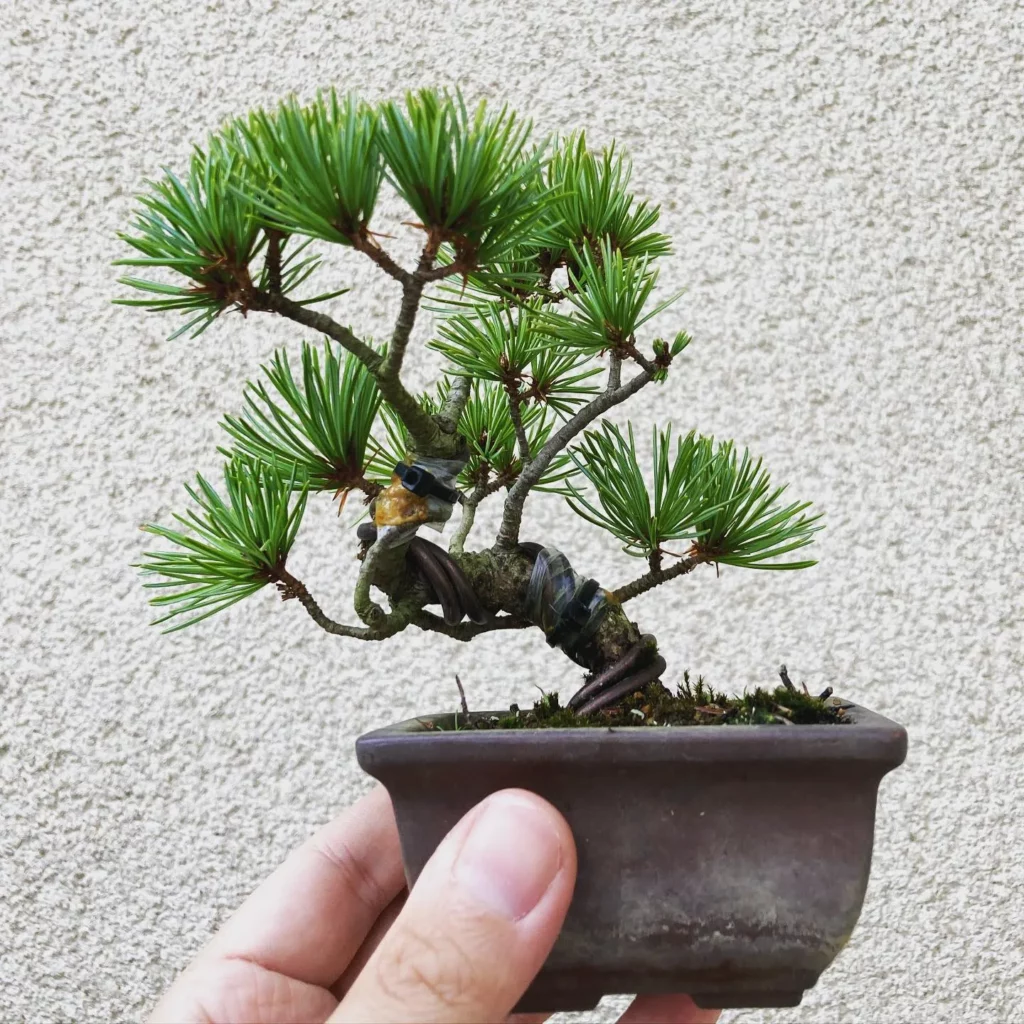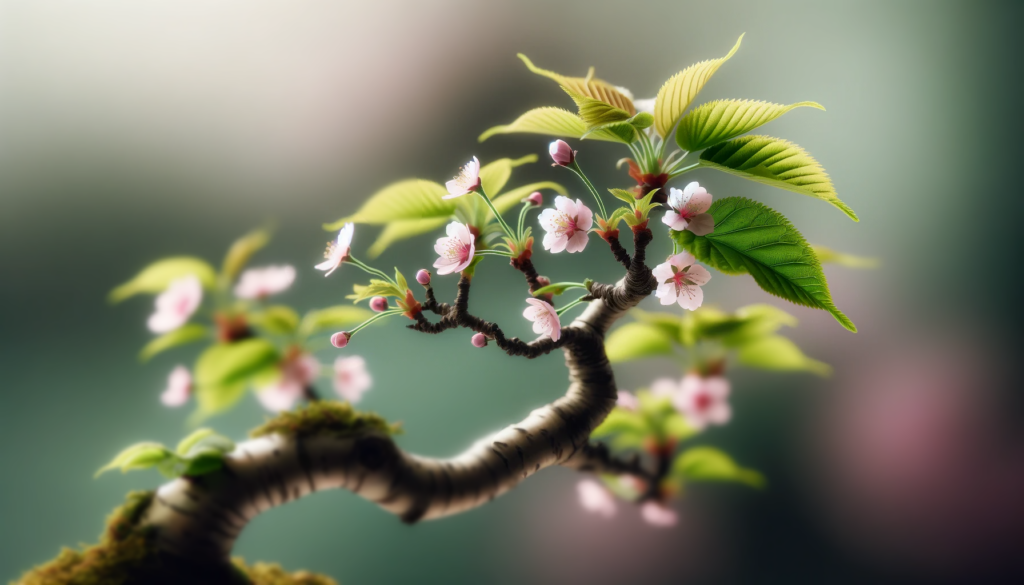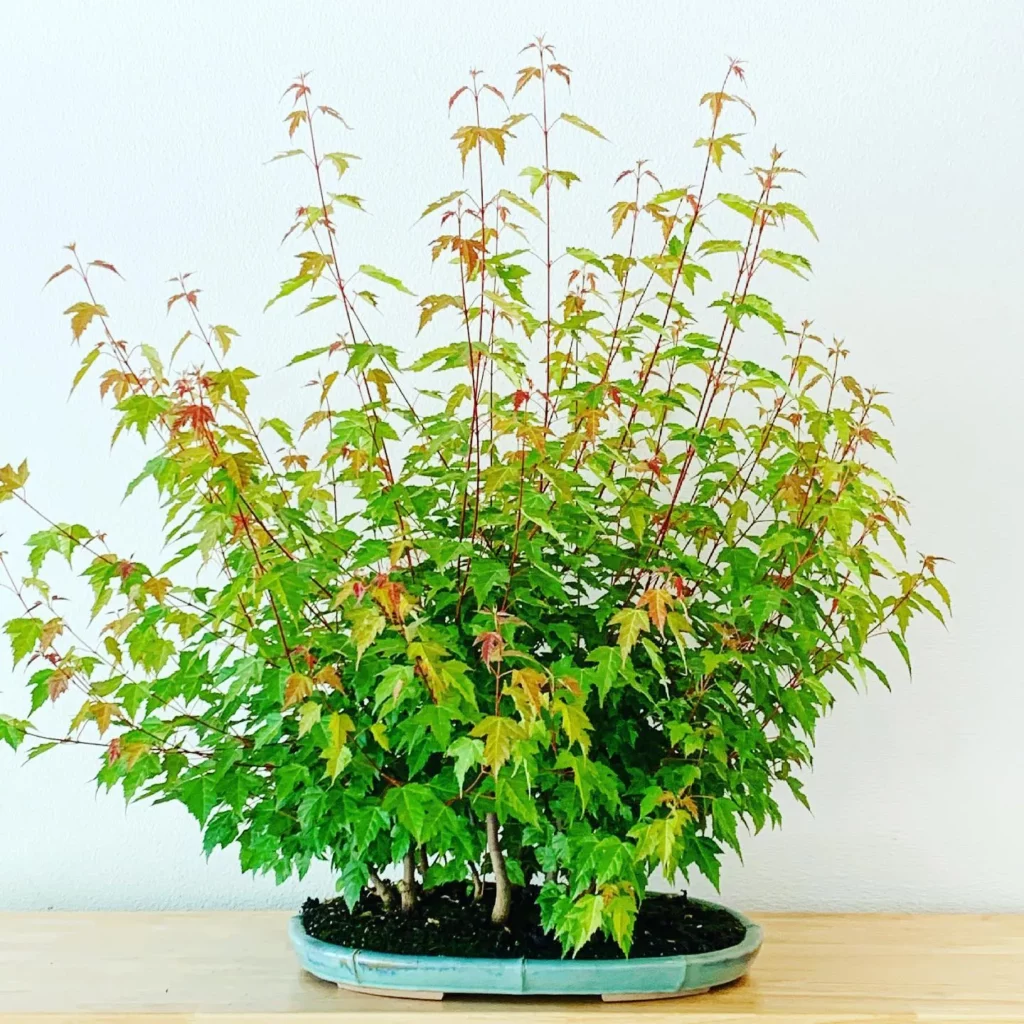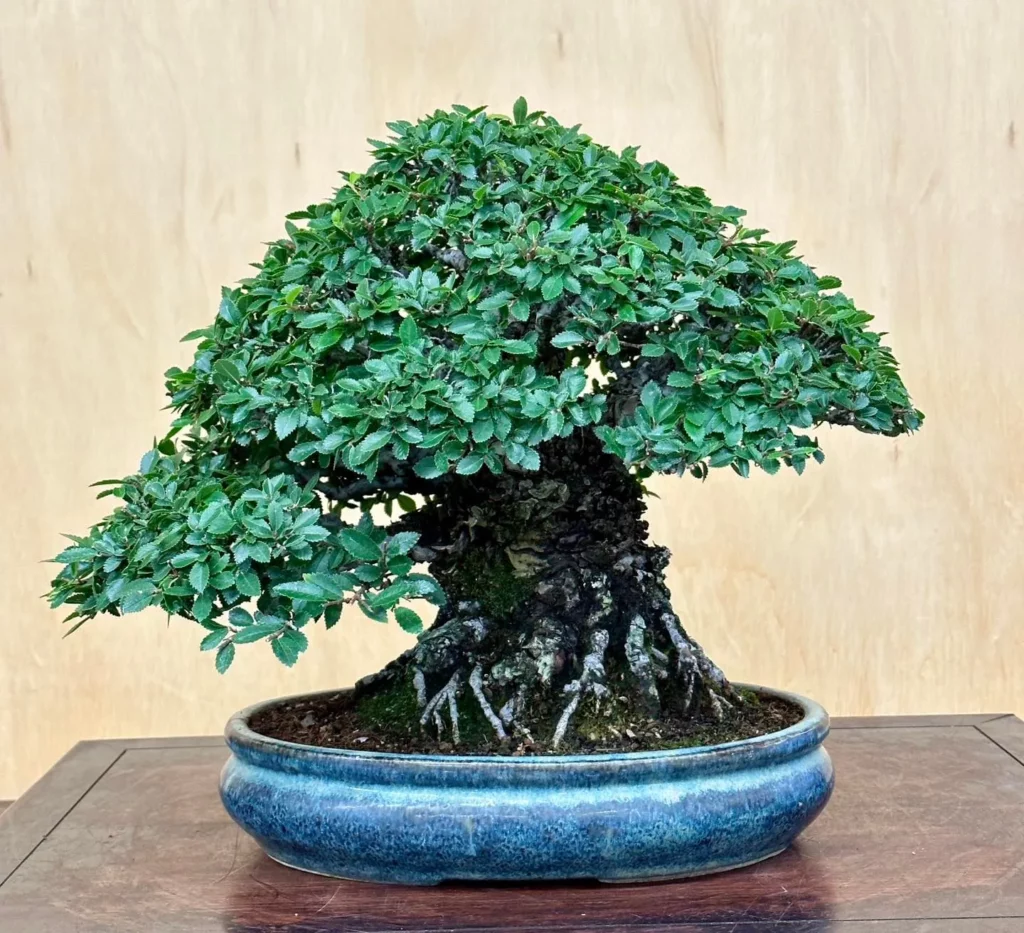Welcome to the ultimate guide on growing Bonsai from seed! If you’ve ever dreamed of nurturing your own miniature masterpiece, this step-by-step guide is here to help you bring that dream to life. Whether you’re a seasoned gardener or new to the art of Bonsai, we’ll take you through the entire process, from sowing the seeds to caring for your growing Bonsai. So grab your gardening tools, and let’s get started on this exciting journey.
Growing Bonsai from seed requires patience and careful attention to specific growing requirements. In this comprehensive guide, we’ll provide you with all the information you need to successfully sow and care for your Bonsai seeds. From understanding the unique characteristics of different seed varieties to providing the proper soil, light, and nutrients, we’ve got you covered.
Next, we’ll explore the sowing and caring process for different tree species. Each variety, from Flame Tree to Brazillian Rosewood, Spruce and Pine to Dawn Redwood and Buddha Tree, requires specific techniques to maximize germination and growth. We’ll provide detailed instructions, including soil temperature, planting depth, and the duration for germination. Armed with this knowledge, you’ll be able to give your Bonsai seeds the best chance of flourishing.
Additionally, we’ll discuss proper soil and watering techniques to keep your growing Bonsai healthy and thriving. Finding the right soil mix and understanding how and when to water are crucial elements in the success of your Bonsai. We’ll share tips on moisture monitoring and deep watering, ensuring your Bonsai receives the proper hydration it needs.
Lastly, we’ll cover the importance of providing adequate light and nutrients for your growing Bonsai. From utilizing LED or bulb-type grow lights to utilizing natural sunlight, we’ll guide you on how to provide the ideal lighting conditions. We’ll also explore the role of plant food and its impact on your Bonsai’s growth and development.
Understanding Seeds and Their Growing Requirements
Not all seeds are the same, and it’s important to understand their specific growing requirements. This includes factors such as germination time, soil temperature, and the need for stratification. Each seed variety may have unique needs, and the back of the seed packet provides crucial information specific to each seed. Pay attention to these details to ensure successful germination and growth of your Bonsai seeds.

Sowing and Caring for Flame Tree Seeds
Flame Tree seeds are a beautiful addition to any garden, known for their vibrant red flowers and unique foliage. To successfully grow Flame Tree from seeds, follow these steps:
Sowing Flame Tree Seeds
- Start by soaking the Flame Tree seeds in warm water for 24-48 hours. This softens the hard shell casing and promotes germination.
- After soaking, plant the seeds lengthwise in the soil at a shallow depth. Make sure the soil is well-draining and loose to allow for proper root development.
Caring for Flame Tree Seeds
- Maintain a consistent soil temperature between 70-80°F for optimal germination. You can use a heating pad or a warm location to provide the necessary warmth.
- Keep the soil consistently moist during the germination period. Avoid overwatering, as it can lead to root rot, but ensure the soil doesn’t dry out completely.
- It may take up to a month for Flame Tree seeds to germinate. Be patient and provide the necessary care and conditions for successful growth.
Sowing and Caring for Brazillian Rosewood Seeds
If you’re interested in growing Brazillian Rosewood, it’s important to know the right techniques for sowing and caring for the seeds. Follow these steps to increase your chances of successful germination and healthy growth.
- Soaking the Seeds: Before planting, soak the Brazillian Rosewood seeds between wet paper towels for 12-24 hours. This process helps to soften the seed coat and stimulate germination.
- Planting Depth: Once the seeds are soaked, plant them at a shallow depth in the soil. Make sure to cover them with no more than 1/4″ of soil. This will allow the seeds to receive the necessary warmth and moisture for germination.
- Warm Environment: Brazillian Rosewood seeds require a warm environment to germinate successfully. Maintain temperatures above 85°F to provide optimal conditions for the seeds.
- Germination Time: Patience is key when sowing Brazillian Rosewood seeds. It can take up to two months for the seeds to sprout. Ensure that you provide consistent care and maintain the warm temperature throughout this period.
Sowing and Caring for Spruce and Pine Seeds

When it comes to growing Spruce and Pine trees from seeds, there are certain steps you need to follow to ensure successful germination and healthy growth. Below is a comprehensive guide on sowing and caring for Spruce and Pine seeds:
Sowing Spruce and Brazillian Rosewood Seeds:
- Soak the seeds in cool water for 8-12 hours before planting to help soften the seed coat and improve germination.
- Choose loose soil and plant the seeds no deeper than 1/8″. This ensures that the young seedlings can easily push through the soil when they germinate.
- Ensure the soil maintains a cool temperature of around 65°F (18°C) for optimal growth. You can use a thermometer to monitor the soil temperature.
Caring for Spruce and Pine Seedlings:
- Water the seedlings regularly to keep the soil moist but not waterlogged. Avoid letting the soil dry out completely.
- Provide adequate light for the seedlings. If growing them indoors, place them near a sunny window or use artificial grow lights.
- During the first year of growth, pay special attention to the development of tap roots. This root structure is crucial for the long-term health and stability of the trees.
Sowing and Caring for Dawn Redwood Seeds
If you’re eager to grow beautiful Dawn Redwood trees in your garden, sowing and caring for the seeds is the first step towards success. These majestic trees are known for their vibrant foliage and impressive height. Here’s a guide on how to sow and care for Dawn Redwood seeds:
1. Stratification:
The germination process for Dawn Redwood seeds begins with stratification. This involves chilling the seeds in a sealed plastic bag with peat moss in the refrigerator for about a month. Stratification mimics the natural winter conditions and prepares the seeds for successful germination.
2. Sowing:
After stratification, it’s time to sow the Dawn Redwood seeds. Prepare a suitable pot or seed tray with well-draining soil. Plant the seeds at a depth of 1/8″-1/4″ and lightly cover them with soil. Ensure the soil remains consistently moist but not waterlogged.
3. Germination:
Germination of Dawn Redwood seeds requires a bright location with temperatures around 70°F. Place the pot or seed tray in a sunny spot or use grow lights to provide adequate light. Keep the soil moist and expect germination to occur within two months. Be patient, as Dawn Redwood seeds can take some time to sprout.
4. Caring for Seedlings:
Once the Dawn Redwood seeds have sprouted, continue to provide them with bright light and maintain a temperature of around 70°F. Water the seedlings regularly, keeping the soil evenly moist but not waterlogged. Avoid overwatering, as it can lead to fungal diseases.
5. Transplanting:
As the Dawn Redwood seedlings grow, you may need to transplant them into larger containers to provide sufficient space for their roots to expand. Wait until the seedlings have developed strong root systems before transplanting. Handle the delicate roots with care to avoid damage.
Sowing and Caring for Buddha Tree Seeds
When it comes to sowing and caring for Buddha Tree (Ficus religiosa) seeds, proper techniques are crucial to ensure successful germination and healthy growth. Follow these steps to maximize your chances of growing a beautiful Buddha Tree:
- Soaking the seeds: Begin by soaking Buddha Tree seeds between wet paper towels for two days. This process helps to soften the seed coat and promote germination.
- Rubbing the seeds: Lightly rub each seed with sandpaper after soaking. This gentle abrasion aids in the germination process, allowing easier access for moisture and nutrients.
- Planting depth: Plant the seeds in well-draining soil at a depth of 1/16″. It’s essential to barely cover the seeds to allow them to reach the surface easily during germination.
- Temperature requirements: Buddha Tree seeds prefer temperatures no cooler than 75°F (24°C) for optimal germination. It’s important to provide a warm and consistent environment to encourage their growth.
- Germination timeline: Buddha Tree seeds can take up to 90 days to sprout. Be patient and provide the seeds with the necessary care and attention during this timeframe.
Sowing and Caring for Siberian Elm Seeds

If you’re planning to grow Siberian Elm trees from seed, it’s important to understand the proper sowing and caring techniques to ensure successful germination and healthy growth. Follow these guidelines to give your Siberian Elm seeds the best chance of thriving:
- Soaking the seeds: Before planting, soak the Siberian Elm seeds in either cold or warm water for a day. This helps to soften the seed coat and improves germination rates.
- Planting depth: When planting the seeds, make sure not to bury them too deep. Plant the Siberian Elm seeds no more than a quarter of an inch deep in compacted soil. This will allow the seeds to establish root systems more easily.
- Preferred temperature: Siberian Elm seeds prefer cool temperatures for germination. Maintain the soil temperature in the range of 65-70°F (18-21°C) to encourage successful germination and healthy growth.
- Germination period: The germination period for Siberian Elm seeds typically takes about a month. During this time, it’s essential to provide consistent moisture to the soil and maintain the recommended temperature range.
Proper Soil and Watering Techniques
When sowing and caring for Bonsai seeds, it’s important to use soil specifically designed for seed-starting. Regular bonsai soil should be used only once the seeds have matured.
No products found.
Proper watering techniques are crucial to the success of your Bonsai. It’s important to keep the soil damp, but not soaking wet. Overwatering can lead to root rot, while underwatering can cause the tree to dry out.
Bonsai Soil:
- Use a well-draining soil mix specifically formulated for Bonsai cultivation.
- The soil should be loose and breathable, allowing oxygen to reach the roots.
- Avoid using garden soil or potting soil, as they can compact and suffocate the roots.
- Consider adding organic matter like peat moss or coconut coir to improve moisture retention.
Watering Techniques:
- Deep watering a couple of times a week is recommended to ensure the roots receive adequate moisture.
- Avoid surface watering, as it may not penetrate deep enough to reach the root system.
- If the top layer of soil feels dry to the touch, mist the soil or use a spray bottle to add moisture without overwatering.
- Monitor the soil moisture regularly using a moisture meter or the toothpick test. Insert a toothpick into the soil and if it comes out dry, it’s time to water.
Providing Adequate Light and Nutrients
Once your Bonsai seeds have sprouted, they need ample light to continue their growth. LED grow lights or conventional bulb-type grow lights can be used for at least 8-10 hours a day. Natural sunlight can also be used, but care should be taken on cloudy days to ensure sufficient light.

It’s important to provide your Bonsai seedlings with the right nutrients to support their development. Once the seedlings develop their second set of leaves, it’s time to give them plant food. Opt for a water-based fertilizer that is low-dose and rich in micro-nutrients. This will provide the necessary nutrients for healthy growth and vibrant foliage.
No products found.
Thinning Out and Transplanting
Thinning out your Bonsai seedlings is a critical step in promoting healthy growth and ensuring the best chances of success. By thinning out, you are allowing only one seedling to remain per pot or cell, giving it ample space and resources to thrive.
Transplanting should be done once your Bonsai seedlings have had sufficient time to grow and develop. It’s important to resist the urge to transplant too soon, as this can disturb the fragile roots and hinder the overall health of the tree.
When the time is right for transplanting, remember to do it gradually. This allows the roots to adjust to their new environment and gives the tree time to recover from any pruning or transplant shock. Carefully remove the seedling from the current pot, being mindful of the roots, and gently transfer it to a new container with fresh, well-draining soil.
Remember, thinning out and transplanting are crucial steps in the journey of growing Bonsai from seed. By giving your seedlings the appropriate space and conditions, you are setting them up for a healthy and vibrant future as beautiful Bonsai trees.
After this check out our other articles on:
FAQ
What are the specific growing requirements for Bonsai seeds?
Growing Bonsai from seed requires patience and careful attention to specific growing requirements. Factors such as germination time, soil temperature, and the need for stratification vary depending on the seed variety. It’s important to refer to the information provided on the back of the seed packet to ensure successful germination and growth.
How do I sow and care for Flame Tree seeds?
Flame Tree seeds have a hard shell casing and require soaking in warm water for 24-48 hours to aid in germination. After soaking, the seeds should be planted lengthwise in the soil at a shallow depth. The ideal soil temperature for germination is between 70-80°F, and consistent moisture is essential during this period. It may take up to a month for Flame Tree seeds to germinate.
What is the process for sowing and caring for Brazillian Rosewood seeds?
Brazillian Rosewood seeds should be soaked between wet paper towels for 12-24 hours before planting. They should be planted at a shallow depth in the soil, with no more than 1/4″ of soil covering them. These seeds require a warm environment, with temperatures over 85°F for successful germination. It can take up to two months for Brazillian Rosewood seeds to sprout.
How do I sow and care for Spruce and Pine seeds?
Spruce and Pine seeds should be soaked in cool water for 8-12 hours before planting. They should be planted no deeper than 1/8″ in loose soil. These seeds prefer cool temperatures, with soil kept at around 65°F. Germination can take up to a month for Spruce and Pine seeds. It’s important to ensure they develop strong tap roots during the first year of growth.
What are the steps for sowing and caring for Dawn Redwood seeds?
Dawn Redwood seeds require stratification, which involves chilling them in a sealed plastic bag with peat moss in the refrigerator for a month. After stratification, the seeds can be planted at a depth of 1/8″-1/4″ in prepared soil. They require a bright location with temperatures around 70°F for germination. It can take up to two months for Dawn Redwood seeds to sprout.
How should I sow and care for Buddha Tree seeds?
Buddha Tree seeds should be soaked between wet paper towels for two days before planting. Lightly rubbing each seed with sandpaper can help speed up the germination process. Plant the seeds at a depth of 1/16″ in the soil, ensuring that they are barely covered. Buddha Tree seeds require temperatures no cooler than 75°F and can take up to 90 days to sprout.
What is the process for sowing and caring for Siberian Elm seeds?
Siberian Elm seeds should be soaked in cold or warm water for a day before planting. They should be planted no deeper than 1/4″ in compacted soil. These seeds prefer cool temperatures, with the soil kept at 65-70°F. Germination can take about a month for Siberian Elm seeds.
What kind of soil and watering techniques should be used for Bonsai seeds?
When sowing and caring for Bonsai seeds, it’s important to use soil specifically designed for seed-starting. Regular bonsai soil should be used only once the seeds have matured. Proper watering techniques include deep watering a couple of times a week, keeping the soil damp but not soaking wet. Misting the top soil when dry is also recommended. Use a moisture meter or the toothpick test to monitor soil moisture.
How do I provide adequate light and nutrients for my growing Bonsai seeds?
Once your Bonsai seeds have sprouted, they need ample light to continue their growth. LED grow lights or conventional bulb-type grow lights can be used for at least 8-10 hours a day. Natural sunlight can also be used, but care should be taken on cloudy days to ensure sufficient light. Once the seedlings develop their second set of leaves, provide them with water-based plant food that is low-dose and rich in micro-nutrients.
What are the steps for thinning out and transplanting Bonsai seedlings?
Thinning out your seedlings is essential for healthy growth, ensuring that only one seedling remains per pot or cell. Transplanting should be done once the seedlings have had sufficient time to grow and develop. Avoid transplanting too soon, as it can disturb the fragile roots. Thinning out and transplanting should be done gradually, allowing the roots to adjust and the tree to recover from pruning.




